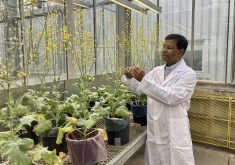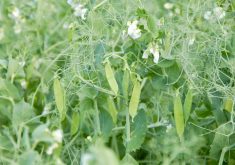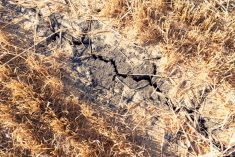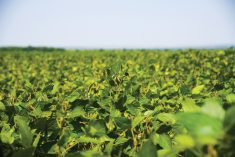Calling something a “lemon” suggests it’s not up to par, but a lemon-based tart was the winner in this year’s Mission Impulseible.
The “Peamon” tart was created by a trio of University of Alberta food science students who used canned red kidney beans, chickpeas, romano beans and great northern white beans as well as other traditional ingredients for the crust for their dessert. They also created “Peggs,” a protein binder made out of peas, as a substitute for the eggs in the filling of their tart.
Read Also

The long march to autonomy
The big players in the machinery market keep adding pieces towards autonomous vehicles for farming, but how far away is a final product?
“We came up with our product because I had the great opportunity of working with pulse crops last summer,” said Andrea Roman, who also admits to having a sweet tooth.
Realizing there weren’t a lot of pulse-based products in the bakery case, Roman pitched her idea to team partners Kaixing Tang and Minghua Yu.
The tart is a gluten- and egg-free product, and also has fewer calories, sugar and fat than a traditional lemon tart. And it contains dietary fibre and nutritional protein.
“The Peamon tart celebrates the International Year of Pulses by using a variety of pulses to showcase their variety and versatility,” she said.
The seventh annual student food development contest was attended by about 40 people who sampled the entries.
The trio won $1,500 and will work with the Leduc Food Processing Centre to see if their product could be commercialized. They will also represent the province in Mission Impulseible’s national competition in Calgary on June 23.
A chickpea nugget captured second place and a $1,000 prize, while the third-place team won $500 for Pulscotti, a pulse-based cookie spread.
Alberta Pulse Growers chair Allison Ammeter said pulse growers and processors need to capitalize on the attention generated by the International Year of Pulses in 2016.
“We have a chance to tell the world about pulses and about their attributes and benefits, and we are planning to make use of every bit of it,” said Ammeter. “One of the cool things is this is the first time that a United Nations designation has been embraced by an industry determined to make the most of it. They’re watching the pulse industry very closely to see what we do with it and how it goes.”
An international team has been set up to create a pulse brand, she said.
“Our goal is to have this brand on every product that has pulse products in it,” said Ammeter.
About 60 countries are developing committees to promote pulses during the International Year of Pulses, with events and promotional projects beginning in November and running throughout 2016.
















